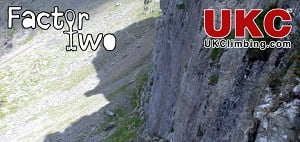In reply to EarlyBird:
Elevation is complicated. The ground is lumpy, and not mapped with adequate accuracy to reflect all the up and down bits you might actually take. For instance, imagine a set of sand dunes, just less than 10m high, and 10m contours. The dunes would not register, so counting contours won't work. But you gain about 10m every dune you climb.
Then there's the measurement issue. If you're recording with GPS, and using GPS altitude, then you'll be subject to errors in measurement, since GPS VDOP is about 3 times worse than HDOP (i.e. vertical errors are about three times the horizontal error). And, due to the semi-random nature of GPS errors, you will get a 'random walk' error, that would cause a straight line walk on perfectly flat ground to measure longer than it really is (adding up the distnaces between the 1 second interval position fixes).
You may also have loss of route data, if you lost signal due to obstruction; these are easy to spot by the 'crow flies' segments when plotted horizontally.
If you use a digital elevation model to compute the elevation, we're back to the problem of resolution, since the DEM will, at best, probably be no more than a 50m horizontal grid, so it can miss the detail. And the grid spot heights have an error. And, as you move between the points of the grid, you have to interpolate the height in some way. This might be simple bilnear interpolation, or it might be an nth order interpolation. Which might overshoot...
So, as I said, elevation is complicated, and you are unlikely to get agreement between any of the methods of calculating elevation gain and loss over a mapped route.









